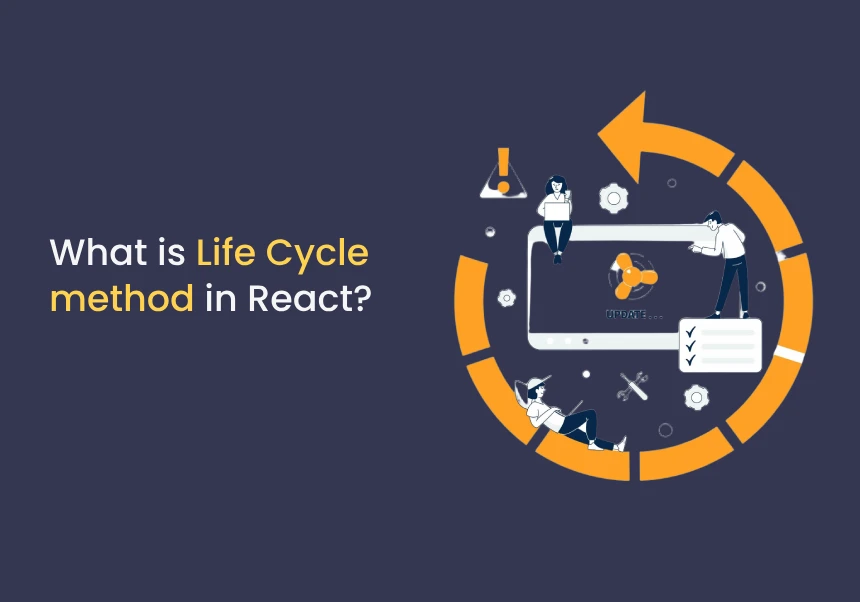In React, lifecycle methods are special methods that are automatically called at different stages of a component’s life cycle.
They allow you to control what happens when a component is created, updated, or destroyed.
Phases of React Component Lifecycle:
React class components have three main lifecycle phases:
| Phase | Description |
|---|---|
| Mounting | When the component is created and added to the DOM. |
| Updating | When the component is re-rendered due to state or prop changes. |
| Unmounting | When the component is removed from the DOM. |
Lifecycle Methods in Class Components:
1. Mounting Phase (Component is Created)
| Method | Description |
|---|---|
constructor() | Initialize state and bind methods. |
static getDerivedStateFromProps() | Sync state with props before render (rarely used). |
render() | Render JSX to the DOM. |
componentDidMount() | Called after the component is rendered to the DOM → Ideal for API calls. |
2. Updating Phase (Component Re-renders)
| Method | Description |
|---|---|
static getDerivedStateFromProps() | Sync state with props when props change (rarely used). |
shouldComponentUpdate() | Control if component should re-render (optimize performance). |
render() | Renders JSX again. |
getSnapshotBeforeUpdate() | Capture DOM state before the update (e.g., scroll position). |
componentDidUpdate() | Called after the component re-renders → Ideal for side effects after updates. |
3. Unmounting Phase (Component is Removed)
| Method | Description |
|---|---|
componentWillUnmount() | Called before the component is removed from the DOM → Clean up tasks like timers, event listeners, API calls, etc. |
Summary Table (Lifecycle Methods Overview):
| Phase | Method | Purpose |
|---|---|---|
| Mounting | constructor() | Initialize state, bind event handlers. |
getDerivedStateFromProps() | Sync state from props before rendering. | |
render() | Render the component. | |
componentDidMount() | Perform side effects like data fetching, subscriptions. | |
| Updating | getDerivedStateFromProps() | Sync state from props before update. |
shouldComponentUpdate() | Optimize rendering (e.g., prevent unnecessary re-renders). | |
render() | Re-render component. | |
getSnapshotBeforeUpdate() | Capture DOM information before update. | |
componentDidUpdate() | Perform side effects after component updates. | |
| Unmounting | componentWillUnmount() | Clean up side effects (e.g., cancel subscriptions, timers). |
React Lifecycle Diagram (Visual Summary):
luaCopyEditMOUNTING
|-- constructor()
|-- getDerivedStateFromProps()
|-- render()
|-- componentDidMount()
UPDATING (state/props change)
|-- getDerivedStateFromProps()
|-- shouldComponentUpdate()
|-- render()
|-- getSnapshotBeforeUpdate()
|-- componentDidUpdate()
UNMOUNTING
|-- componentWillUnmount()
Lifecycle Methods in Functional Components (React Hooks Approach):
With Hooks, we use:
useEffect()– Handles side effects (combinescomponentDidMount,componentDidUpdate,componentWillUnmount).useState()– Manages state.useMemo(),useCallback(), etc. – Optimize performance.
Example:
javascriptCopyEditimport { useState, useEffect } from 'react';
function App() {
const [count, setCount] = useState(0);
// ComponentDidMount + ComponentDidUpdate
useEffect(() => {
console.log('Component rendered or updated');
});
// ComponentDidMount (runs only once)
useEffect(() => {
console.log('Component mounted');
}, []);
// ComponentWillUnmount
useEffect(() => {
return () => {
console.log('Component unmounted');
};
}, []);
return (
<div>
<p>Count: {count}</p>
<button onClick={() => setCount(count + 1)}>Increase</button>
</div>
);
}
Key Takeaways:
| Feature | Description |
|---|---|
| Lifecycle Methods | Special methods in class components to manage component behavior during mounting, updating, and unmounting phases. |
| Class vs Functional | Class Components: Use lifecycle methods. Functional Components: Use Hooks (useEffect). |
| Hooks Replacing Lifecycle | useEffect() combines componentDidMount, componentDidUpdate, componentWillUnmount. |
When to Use Lifecycle Methods (Hooks):
✅ Fetching Data → componentDidMount() / useEffect().
✅ Clean Up Subscriptions, Timers → componentWillUnmount() / useEffect() with a cleanup function.
✅ DOM Updates after Render → componentDidUpdate() / useEffect().
Modern React development primarily uses functional components with hooks, but understanding lifecycle methods is still valuable, especially when working with older class-based codebases.






